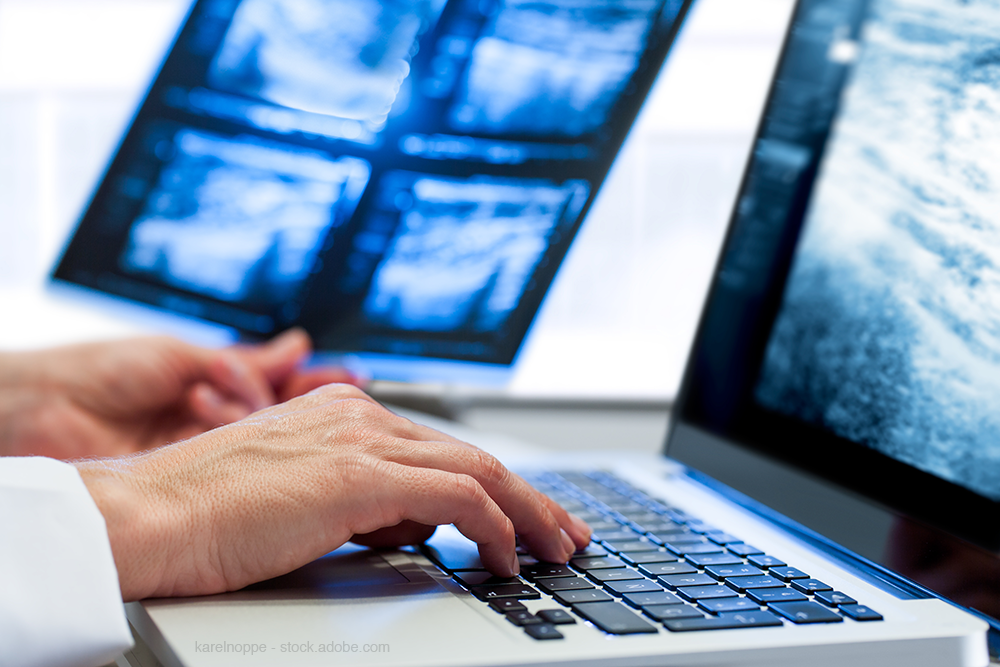Mammography Results Via Video: Faster and Easier to Understand
Preference for emailed video offers benefits to both patient and radiologist.

Receiving and trying to understand mammogram results can be a stressful experience for any woman. But, hearing – and seeing – a radiologist deliver the message can make the process easier.
Under the Mammography Quality Standards Act (MQSA), facilities must send written letters to women within 30 days, letting them know whether their screening mammogram came back normal or abnormal. Waiting that long can heighten a woman’s anxiety, and the language can sometimes be confusing. To side-step these problems, Rifat Wahab, D.O., assistant professor of radiology and breast imaging at UC Health, investigated whether patients would prefer to receive their mammogram results via email in a video message.
“Patients can easily understand a video without having to read a letter that might use complex, difficult-to-understand language,” she told Diagnostic Imaging. “This way, they can hear their results, and it’s actually something they can come back to and replay.”
Wahab published her results this week in Academic Radiology.
The Study
To determine whether patients would be amenable a video message, Wahab and her colleagues pre-recorded two videos – one for women with normal results and one for women with abnormal findings. They enrolled 94 women in a pilot study, randomly assigned 61 to receive videos and letters and 33 to receive standard letters only, and surveyed them about the experience. Eighty women completed the survey.
Overall, Wahab said, 77 percent of women who received the video message reported they “very much liked or liked” getting their mammogram results that way. More surprisingly, she added, 56 percent of women who received only a letter also indicated they would have preferred a video. In addition, most women reported they preferred receiving the message directly from their radiologist rather than their primary care physician or gynecologist.
“Although I was confident the video message would be appealing, I thought the primary care doctor would still be the main source of information,” she said. “It was interesting that most participants picked the radiologist as their first choice. That’s important to highlight because it shows that radiologists do have an important role in communicating results and that we can play a significant role in the doctor-patient relationship.”
The video messages also made another impact. More women who received abnormal results proactively called to make a follow-up appointment. By the time Wahab’s team reached out to these women within 24 hours of sending the videos, 84 percent had already scheduled a visit compared to 49 percent of women who, according to existing literature, received a letter.
Patient and Radiologist Benefits
Alongside being a preferred communication method, Wahab said, mammogram video messages can offer patients several benefits. Not only can it make the results easier to understand, but it lets the patient see the face behind the image interpretation.
Women also get answers faster, she emphasized.
“This is almost instant access. Women can get the result as soon as its posted,” she said. “It’s much quicker than waiting for a letter in the mail or getting a call from your primary car doctor’s office.”
And, radiologists can also gain because these videos help them to provide more patient-centered care, supporting an on-going focus for the specialty.
“Making and sending these videos to patients makes me feel that I’m more a part of their care team – that they recognize the radiologist as being essential,” she said.
Challenges
But, implementing this type of communication method isn’t without stumbling blocks, Wahab asserted. There are several issues facilities and providers must consider before they switch to video messaging, and each institution will need to evaluate its own resources.
The biggest obstacle, she said, will be identifying the proper platform for video distribution. The electronic medical record might be a logical choice for integration, but not every patient signs up for a patient portal to receive medical information. In addition, some rural locations do not have the computer resources to support an electronic medical record.
Additionally, radiology departments would need to determine how best to incorporate messaging into their workflow. She recommended pre-recording videos with succinct, simple messages. Each radiologist should create his or her own videos so a patient receives a message from the exact individual who interpreted her exam.
Overall, Wahab said, adding video messaging into relaying mammography results adds a personalized touch to this aspect of radiology, underscoring a characteristic that draws many to this sub-specialty.
“I like face-to-face interaction with my patients, and breast imaging can allow for that,” she said. “But, with the majority of our patients being screening patients, we don’t always have the ability to have more personal interaction with our current workflow. The videos help break down that barrier.”